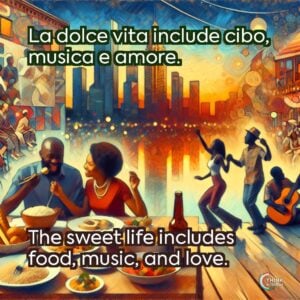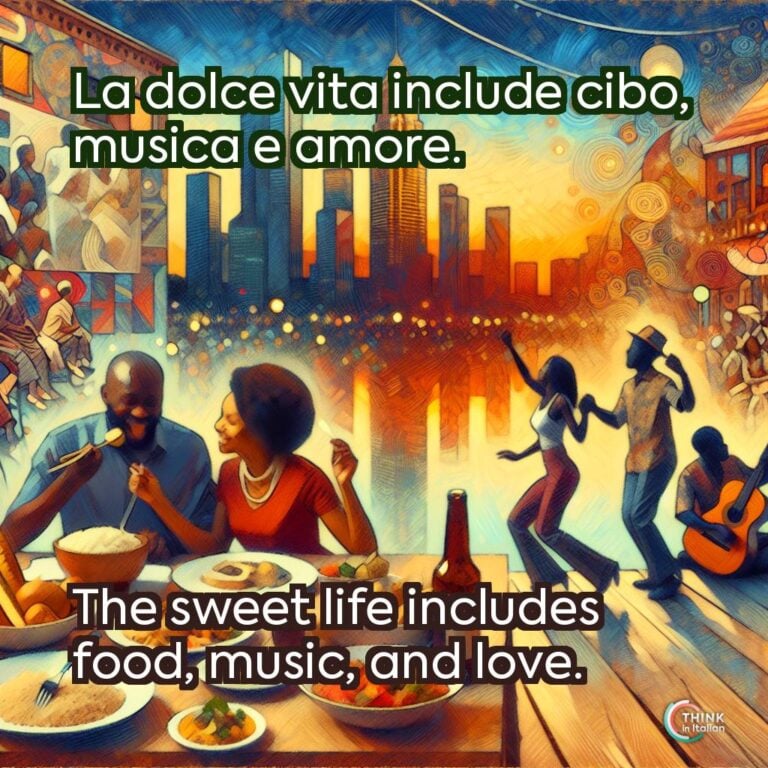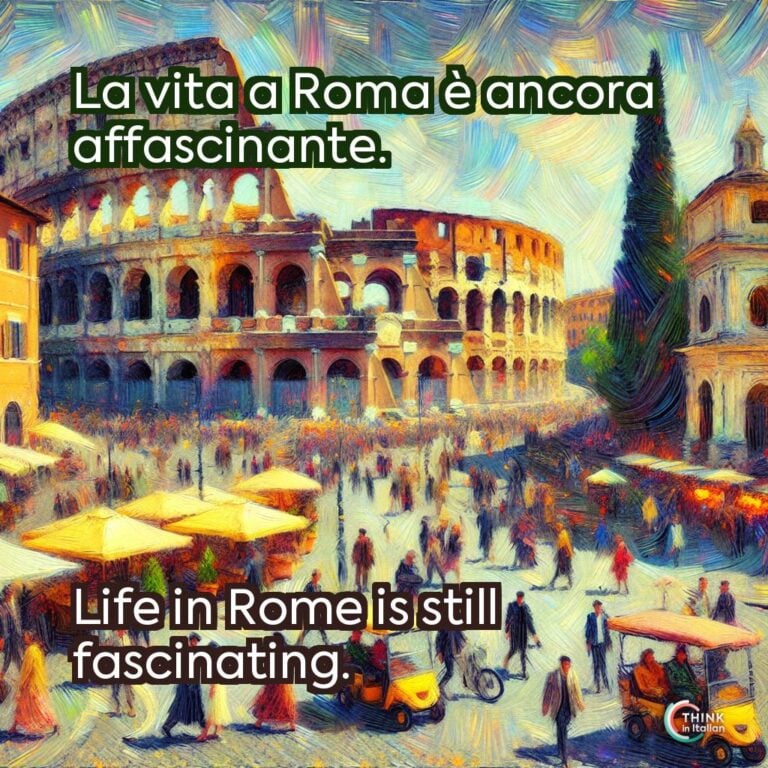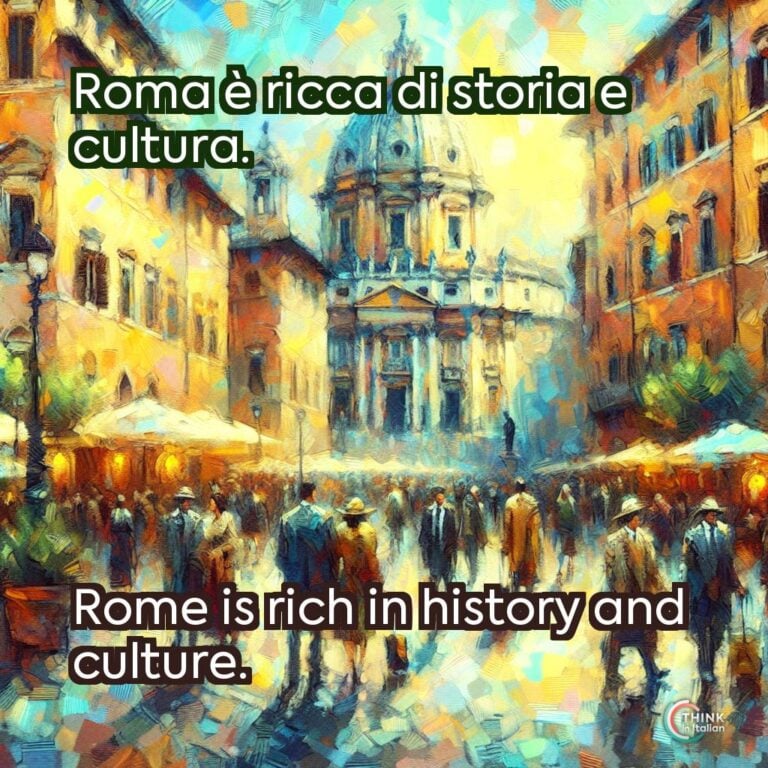“La Dolce Vita”: Meaning
In Italian, la dolce vita literally means “the sweet life”, also commonly translated to “the good life”. This phrase captures Italy’s enduring philosophy of savoring beauty, pleasure, and the simple joys of life.
The Italian dolce vita reflects a unique Italian perspective: a life of balance, where both enjoyment and deeper meaning are pursued.
This expression is not only a musical combination of elegant Italian words: it has a deep cultural and historical meaning, and it shaped both how Italians live their life and how they are perceived from abroad.
Let me guide you through a detailed overview of this expression from different perspectives.
La Dolce Vita
Origin
The term la dolce vita became a global phenomenon thanks to Federico Fellini‘s 1960 film, La Dolce Vita. This cinematic masterpiece captured the glamorous, indulgent, and often chaotic lives of socialites, journalists, and celebrities in Rome.
Through the lens of the film’s main character, the journalist Marcello Rubini, audiences around the world were introduced to the glitzy nightlife, romantic escapades, and existential musings of Rome’s elite.
I think this is one of the most beautiful and important films of the Italian cinematic panorama. It left an indelible mark on popular culture, and influenced fashion, art, and the way the world views Italian culture.
I find it very interesting because not only does it show a life of luxury and glamour, but it also explores the emptiness that can accompany a life of excess. This duality is what, for me, really adds depth to the concept, reminding us that la dolce vita is best enjoyed in balance.
Historical Context
In the late 1950s and early 1960s, Italy experienced an economic boom known as the miracolo economico (economic miracle), which lifted the country from the devastation due to the war to a new phase of prosperity.
During this period, Italy experienced a shift that drove it into a consumer-driven society and gave rise to huge social contrasts: wealth and optimism versus the scars of the war.
The release of Federico Fellini’s 1960 film captured these events, and explored both the glamour and the existential emptiness that arose from Italy’s rapid modernization.
The best social aspect of the film lies in the question of whether this “sweet life” was truly fulfilling or merely a glamorous facade. It served as a subtle critique of the rising consumerism in postwar Italy.
The character Paparazzo, a relentless photographer, symbolizes this intrusion of consumer culture into private life. His name gave rise to the term paparazzi, one of those Italian words used in English and many other languages.
Living “La Dolce Vita” Today
In modern Italy, la dolce vita is a lifestyle that continues to influence Italy’s daily life. Italians embrace it by finding joy in simple pleasures. For me, it really is about savoring the present and valuing quality over quantity.
Think of the café culture: Italians take pleasure in the ritual of coffee, sitting at cafés for extended periods, sipping espresso, and engaging in conversation.
But this Italian lifestyle is not limited to Italy: it has transcended Italy’s borders and became a phrase known worldwide to represent an enviable, fulfilling lifestyle.
For many, it’s a synonym of the dream of living in Italy, enjoying its landscapes, and adopting a slower, more enjoyable pace of life.
Immerse Yourself in the Italian Dolce Vita
La dolce vita is more than a phrase, it’s a way of life that encourages you and us all to find beauty in the everyday, celebrate connections, and enjoy life’s pleasures.
Fellini’s film also serves as a reminder of the importance of balance: I know it might be tempting to seek a life filled with pleasure, but the pursuit of la dolce vita without depth can feel empty.
An exploration of La dolce vita in these deeper contexts highlights how Fellini’s film was a mirror of its time and a prophecy of ours. It is an invitation to redefine what a “sweet life” truly means.






